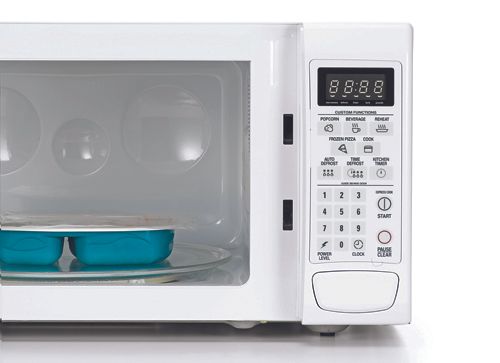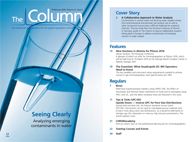The Effect of Microwave and Electron Beam Treatments on Food and Packaging
A team of researchers based in France has examined the consequences of microwave and electron-beam treatments on food and its packaging using high performance liquid chromatography (HPLC) and gas chromatography (GC)
Photo Credit: Studio 504/Getty Images

A team of researchers based in France has examined the consequences of microwave and electron-beam treatments on food and its packaging using high performance liquid chromatography (HPLC) and gas chromatography (GC).1
The packaging of the food we eat poses a huge challenge to the food industry. Consumer demands place extra emphasis on the type of packaging that is produced. It should be compact, microwavable, recyclable, not to mention biodegradable. It must also preserve the food contained within. As a result, manufacturers are turning to more complex polymer materials to meet these demands. These materials need to be examined for their impact on human health and the environment; some polymers can release harmful substances when treated in certain ways.
Polypropylene (PP) films were prepared with a series of additives, and were then treated with electron beam irradiation and microwaves. The PP extracts were separated into six fractions by normal phase HPLC, followed by complete and automated on-line transfer of these to GC (comprehensive two-dimensional analysis, HPLC×GC).
The potential toxicity of the extracts was assessed using three in vitro short-term bioassays and their migrations were performed using a standards-based approach. After the electron-beam treatment some additives decomposed and there was a significant increase in the polyolefin oligomeric saturated hydrocarbons concentration. The electron-beam treatment had a stronger impact on the polymer than the microwave one. It produced degradation products from the additives as well as from the polymer. The additives reduced this degradation of the PP backbone significantly, but also formed degradation products themselves. The microwave treatments (800 or 1100 W) did not lead to structural changes in the PP film. However, the GC–FID–MS analysis indicated the presence of novel degradation products in the film (Irgafos 168 and Irganox 1076).
The team believes that this approach is a big step towards the assessment of the health risks of materials and objects in contact with food. It could also help to comply with the regulations concerning those materials that come into contact with food. - K.M.
Reference
- A.M. Riquet et al., Food Chemistry 199, 59–69 (2016).

HPLC 2025 Preview: Fundamentally Speaking (Part 1)
May 13th 2025Michael Lämmerhofer from the Institute of Pharmaceutical Sciences, University of Tübingen, Germany, spoke to JFK Huber Lecture Award winner of 2024 Torgny Fornstedt, professor in analytical chemistry and leader of the Fundamental Separation Science Group, Karlstad University, Sweden, about his pioneering work in high performance liquid chromatography (HPLC) with a focus on fundamentals and industrial applications.
Reversed-Phases for LC Deliberately Doped with Positive Charge: Tips and Tricks for Effective Use
May 13th 2025In this month's edition of LC Troubleshooting, Dwight Stoll and his fellow researchers discuss both the benefits (improved peak shape/loading) and challenges (excessive interaction) associated with charge-doped reversed-phase (RP) columns for both analytical and preparative separations.
Determining Ways to Protect Honeybee Colonies with GC–MS
May 13th 2025A study conducted by the Agriculture Research Centre of Giza, Egypt, and Jilin Agricultural University in China, evaluated the efficacy of stinging nettle extract, nettle smoke, and formic acid in the controlling of Varroa mites, a major threat to honeybee colonies, with a focus on mite infestation reduction, honeybee mortality, and biochemical responses. Gas chromatography–mass spectrometry (GC–MS) was used to identify key bioactive compounds in the stinging nettle extract.

.png&w=3840&q=75)

.png&w=3840&q=75)



.png&w=3840&q=75)



.png&w=3840&q=75)









